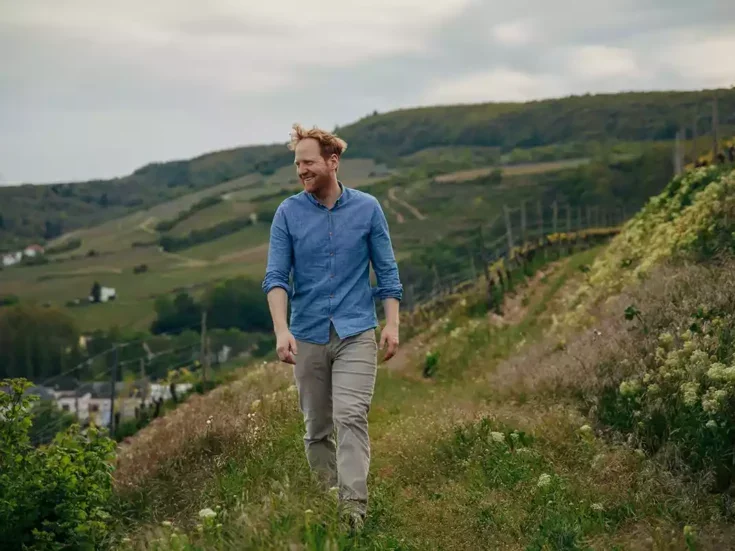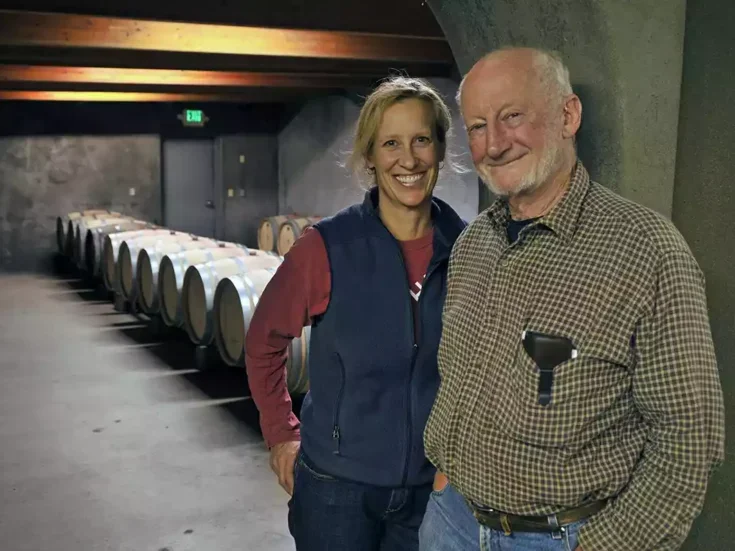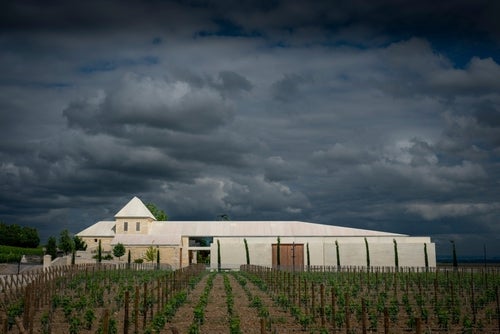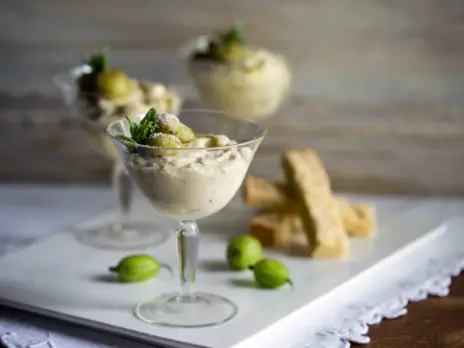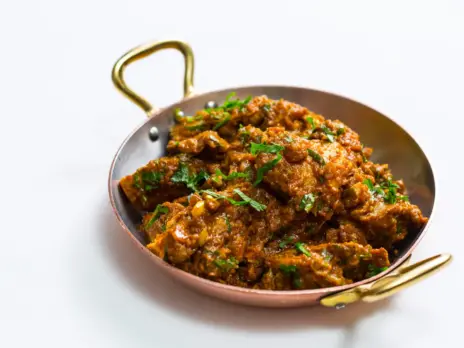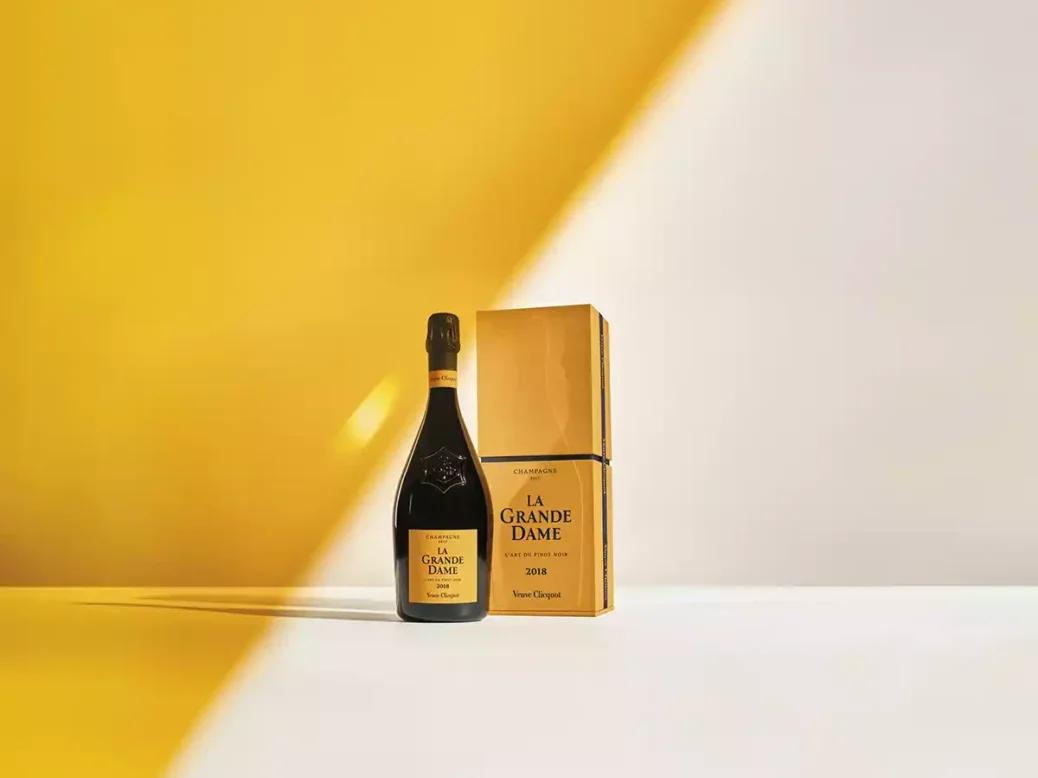
Simon Field MW heads to Paris for the launch of 2018 Veuve Clicquot La Grande Dame.
The neo-classical facade of Paris’s Galerie de Minéralogie et de Géologie appears a little austere for the Left Bank’s Jardin des Plantes, especially given that it is located on the amusingly named Rue du Buffon. A little austere, too, maybe, for the joyous occasion that is the launch of a deluxe Champagne, so maybe there is a hidden agenda; maybe the paleontological backdrop has been deliberately chosen in order to prompt a discussion on rock formation and soil in Champagne—a neat segue, if so. But it is not to be; the behemoth that is Veuve Clicquot even in this, its grandest manifestation, is not inclined to rehearse the minutiae of “terroir,” preferring instead to stress the art of blending and, specifically in this instance, “The Art of Pinot Noir,” with an emphasis on the fact that these two apothegms are not in any way mutually exclusive. We are here to celebrate the launch of 2018 Veuve Clicquot La Grande Dame.
The dry displays of the lengthy central hall of the museum have been concealed by tall yellow screens, between which a vast banqueting table has been set up for more than 200 guests. From the middle of the table, chef de cave Didier Mariotti, laconic in crumpled linen, addresses toasts to the Widow herself, as well as to the Pinot Noir variety. He reminds us of Madame Clicquot’s famous saying of 1825 (nos raisins noirs donnent les vins blancs les plus fins) and recalls how she was an early champion of the variety, specifically focusing on villages on the Montagne de Reims such as Bouzy and Ambonnay. We are to taste the wine throughout the evening, across each of the six courses, and each time in two different glasses. One glass is bulbous, and the other is tulip-shaped, the former bringing out the “horizontal” characters offered by the more southerly of the northern villages, which include Ambonnay, Bouzy, and Aÿ, the latter to remind us of the “verticality” offered by the northerly Montagne villages, most specifically Vertus and Verzenay. When I chat to Didier the following morning and ask him why something that celebrates Pinot Noir is not 100% Pinot Noir, he maintains that the Chardonnay (from Avize and Le Mesnil-sur-Oger) is essential for mid-palate elegance and structural integrity (whatever that may be). It also adds salinity, Didier says. “I love the diversity of expression of Pinot Noir more than of Chardonnay,” he continues. “It is a chameleon, and it is well suited to the changing climate. It is well suited to a hot year such as 2018 and has been especially successful in villages such as Vertus, which brings structure and bitterness to the wine.”
I ask Didier if, given Clicquot’s increasingly precise focus on the vineyards (two small wineries have been set up in situ in Vertus and Verzy, where the malolactic fermentation is not performed, for example), he might consider releasing wines either from individual villages or even from specific sites and vineyards. I know, after all, that Didier is Burgundian and appreciative of the complexity engendered by its diverse model. “Everything and everyone has a role,” he replies. “The growers, with their smaller holdings, have a role, and a large house such as Veuve Clicquot has a role, which must focus on exploiting the wonderful opportunity for blending offered by our unrivaled access to land and fruit. Blending is key at Veuve Clicquot, both intellectually and mathematically.” He speaks with passion and conviction, and it is hard to fault the logic.
Magnificent harmony
A blended masterpiece, then? It is hard to withhold appreciation for the wine, such is its magnificent harmony and energetic complexity. Didier advises that 2018 Veuve Clicquot La Grande Dame was easier to make than its forebear, the 2015, a vintage beset by drought in the latter part of the cycle. In 2018, despite the hot mid-season conditions, the water table stayed high (courtesy of a wet winter) and the vines were seldom hydrically challenged by the high temperatures. 2018 was a vintage of “depth and precision,” blessed with an abundant crop and a very high quality of fruit. The harvest was collected between August 23, relatively early, and September 15, long before the October rains. 2018 is the 25th outing for La Grande Dame, which was introduced in 1972 with the launch of the 1962 vintage. The dosage is 6g/l; Didier advises that he considered going lower but was reluctant to put “extra-brut” on the label. When pushed on the subject, he becomes a little defensive and asks if I would enquire of a chef about how much salt and pepper has been added to a dish… I might well, I think, privately—but then the subject changes.
There are chefs aplenty to ask at this magnificent launch, no fewer than 11, holding 18 Michelin stars between them. The evolution of the meal, we are told, is set to mirror the evolution of our appreciation of the Champagne over time and has been created under the aegis of Veuve Clicquot’s ongoing “Garden Gastronomy” initiative. To help us on our way, the backdrop assumes the guise of a son et lumière, with the lighting progressing over the course of the evening to reflect the natural rhythm of the day. Particular emphasis, naturally enough, is on the sunrise and the sunset and the full, generous orange luminosity of the midday sun. Veuve Clicquot’s famous livery provides a liminal gateway for the imagination. The synaesthetic synthesis of abstract and sensory disciplines is beguiling and entirely seductive—very LVMH, at the very least. The guests are not offered anything quite as prosaic as a menu but, rather, a booklet of seven cards, each in a different shade of yellow and each capturing a phase or mood associated with that particular stage of the dinner. The booklet advises in a pictorial fashion that chef Mory Sacko, say, has contributed the spicy scallops, or that chef Michael Vrijmoed is responsible for the fantastic barbue mariné. To help us on our way, we are also offered swatches of different materials, as if we were buying a carpet or curtains. The idea is clearly to expand the synaesthetic potential of the evening by actually being able to stroke a square of felt or silk or tulle. Or velvet or whatever it may be. A rather imaginative gift, this one.
A feast for the senses, with an outstanding wine at its heart. A complex, thoughtful evening to reflect the qualities of an outstanding Grande Dame. The art of blending is almost surreally turbocharged on such occasions and, at times, can threaten to overwhelm. Would the Widow have approved? Given her commercial inclination and her love of high-quality Pinot Noir, one would very much hope that she would.
2018 Veuve Clicquot La Grande Dame
(90% Pinot Noir, 10% Chardonnay; dosage 6g/l; disgorged fall 2024)
A rich, luminous gold, appropriately enough, with a pristine mousse reveling in its own energy. Aromatic vigor marries citric and orchard fruit, with tropical creamy notes in deference to the warm vintage, red fruit, and a toasty, near-savory texture thereafter in praise of the Pinot Noir. Artistry, indeed: approachable and yet powerful, silky and generous mid-palate and also marked by amertume noble on the finish and a tacit promise of future complexity. A very complete and accessible Grande Dame, despite its youth, juxtaposing drama and beauty. | 95

